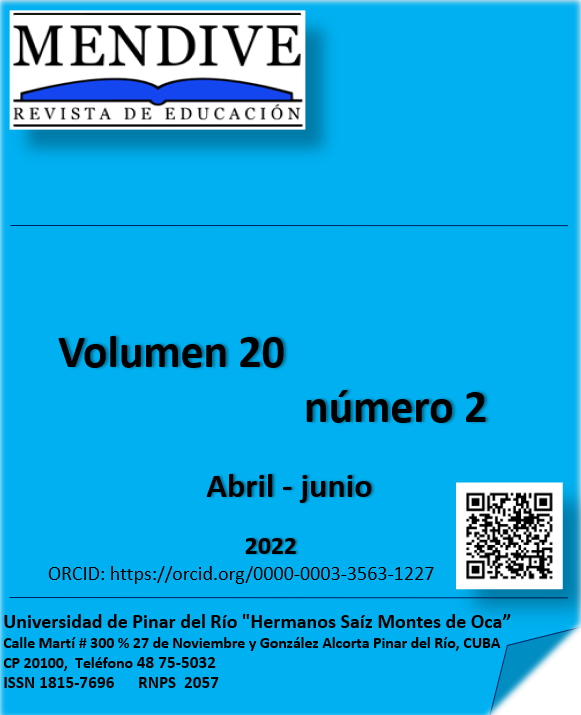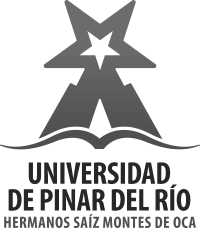Problems and challenges in the teaching of journalistic writing
Main Article Content
Abstract
Downloads
Article Details
References
Aguinaga, E. d. (2000). Nuevo concepto de Redacción Periodística. Estudios sobre el mensaje periodístico (UCM), (6), 307-325. Disponible en: https://revistas.ucm.es/index.php/ESMP/article/download/ESMP0000110307A/12950/
Arrieta de Meza, B y Meza, R. (2000) Algunas estrategias para el mejoramiento de la lectura y de la redacción en estudiantes universitarios de recién ingreso. Revista Investigación y Postgrado. 15(1), Universidad Pedagógica Experimental Libertador.
Campbell Wilcox, K., Yagelski, R., & Yu, F. (2014). The nature of error in adolescent student writing. Reading and Writing, 27(6), 1073-1094. Disponible en: doi:10.1007/s11145-013-9492-x
Carratalá, F (2006) La enseñanza integrada de la ortografía y el vocabulario en la Enseñanza Secundaria. Material didáctico. Comunidad de Madrid. Disponible en: http://www.madrid.org/bvirtual/BVCM001663.pdf
Carlino, Paula (2005). Escribir, leer, y aprender en la universidad. Una introducción a la alfabetización académica. Buenos Aires: Fondo de Cultura Económica. Disponible en: https://www.aacademica.org/paula.carlino/3.pdf
Cortina Savigne, Y. A. (2021). Perífrasis verbales vs. redacción periodística. ISLAS, 63(200), Pp. 122129. Recuperado a partir de https://islas.uclv.edu.cu/index.php/islas/article/view/1202
Dimángano, P. y Delgrosso, A. (2016) La disortografía en universitarios: estudio descriptivo de la actitud y opinión de los docentes. Revista da UIIPS, 4(4), p1-13. Disponible en: https://revistas.rcaap.pt/uiips/article/download/14455/10842
Figueredo, L. A. L. (2021). Enseñanza aprendizaje de la redacción de textos expositivos: Una experiencia. (Original). Roca. Revista científico - educacional de la provincia Granma, 17(2), 490-506. Disponible en: https://revistas.udg.co.cu/index.php/roca/article/view/2394/4671
Lemos, L. L. (2000). Redacción y Estilo Periodístico. En: Colecci6n MONOGRAFIAS CIESPAL, Volumen No. 10, ISBN-9978-55-0Q4-S, Primera Edici6n, Ediciones CIESPAL. Disponible en: https://biblio.flacsoandes.edu.ec/libros/digital/46577.pdf
Ministerio de Educación de Ecuador. (2016). Lengua y Literatura. Ecuador: Ministerio de Educación. Disponible en: https://educacion.gob.ec/wp-content/uploads/downloads/2016/03 /LENGUA.pdf
Morales, Ó. y Hernández, L. (2004) Estudio descriptivo del uso de la ortografía de los estudiantes universitarios de nuevo ingreso. Kaleidoscopio, 1(2), 151-159. Disponible en: http://www.saber.ula.ve/handle/123456789/16499
Parratt, S., Paniagua, P. y Abejón, P. (2017) Manual práctico de redacción periodística. España: EDITORIAL SÍNTESIS, S. A., ISBN: 978-84-9077-451-9. Disponible en: https://www.sintesis.com/data/indices/9788490774519.pdf
Rodríguez, J. (2001). Errores comunes en el lenguaje periodístico. Chasqui. Revista Latinoamericana de Comunicación, 0(76), 53 - 53. Disponible en: doi: https://doi.org/10.16921/chasqui.v0i76.490
Ríos Laborde, Y. (2021). Particularidades de la oración subordinada en español. Su incidencia en la redacción periodística. ISLAS, 63(200), 112-121. Disponible en: https://islas.uclv.edu.cu/index.php/islas/article/view/1200
Suárez Ramírez, S., Suárez Muñoz, Á., Guisado Sánchez, I., & Suárez Ramírez, M. (2019). La ortografía en el ámbito universitario: una realidad que exige la reflexión del alumnado y la implicación del profesorado. Didáctica. Lengua y Literatura, 31, 135-145. Disponible en: https://doi.org/10.5209/dida.65945
Velázquez Avila, K. M., & Santiesteban Naranjo, E. (2021). La evaluación de la competencia gramatical: una experiencia desde el proceso de enseñanza-aprendizaje. Sinergia Académica, 4(3), 19-33. Disponible en: https://doi.org/10.51736/sa.v4i3.59
Zavala González, H. D., & Corona González, M. V. (2010). Importancia de las características y funciones presentes en el lenguaje periodístico de los medios impresos de Maracaibo. Revista de Ciencias Sociales, 16(1), 21-27. Disponible en: https://bit.ly/3IxQKfJ


